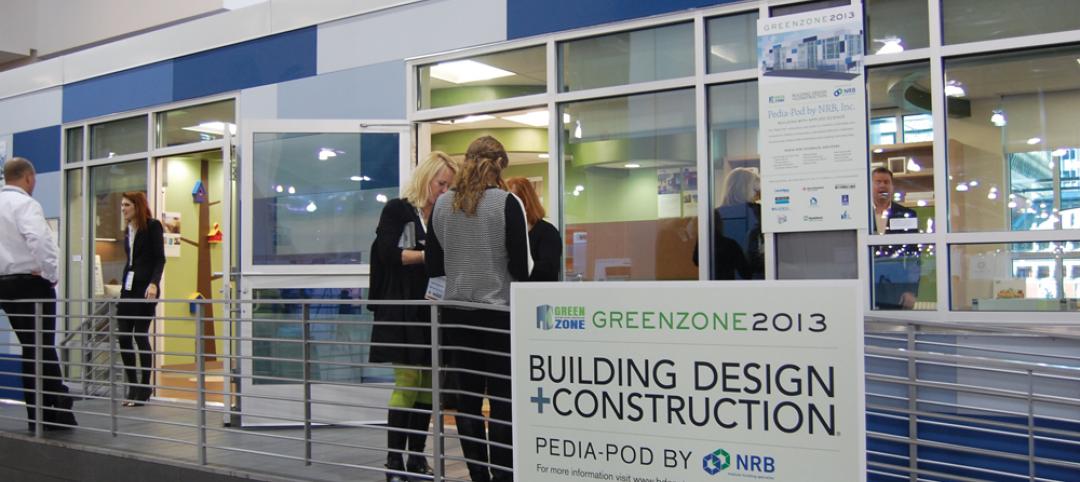WSP is expanding its national presence by acquiring ccrd, a national MEP engineering and commissioning firm.
WSP's buildings group, headquartered in New York City, now has 1,050 employees in 16 offices across the U.S. This merger will enhance the firm's capabilities in healthcare and science/technology, something that Houston-based ccrd has extensive expertise in.
“We are very enthusiastic about the benefits this will provide to our firms, clients and staff,” says Steve Burrows, executive vice president and USA director of buildings at WSP. “ccrd is a strong complement to our existing service offering, and the acquisition introduces WSP to new markets throughout the southeastern and south-central United States, while bolstering our existing presence in Houston and Washington, D.C.”
WSP and ccrd hold similar values and cultures, all the makings for an ideal merge.
WSP president and CEO, David Cooper, expands on the added benefits of acquiring ccrd. “Our coming together also expands the breadth of ccrd’s offering and affords them the benefits that come with being part of a national engineering consultancy, which, in addition to MEP systems engineering, has expertise in building structures, transportation and infrastructure, and environmental services,” notes Cooper. “ccrd’s clients will now have access to a single source for fully integrated multidisciplinary engineering services, and their employees will have expanded avenues for career exploration and growth.”
Related Stories
| Dec 13, 2013
Safe and sound: 10 solutions for fire and life safety
From a dual fire-CO detector to an aspiration-sensing fire alarm, BD+C editors present a roundup of new fire and life safety products and technologies.
| Dec 13, 2013
AIA, MIT issue joint report on impact of design on public health
The research looks at the health of eight U.S. cities and lays out a path for translating the research into meaningful findings for policy makers and urban planners.
| Dec 11, 2013
Wyndham unveils hotel prototype for its Hawthorn Suites chain
The extended-stay hotel prototype reduces development costs by 46% for franchisees and enhances the overall guest experience.
| Dec 10, 2013
16 great solutions for architects, engineers, and contractors
From a crowd-funded smart shovel to a why-didn’t-someone-do-this-sooner scheme for managing traffic in public restrooms, these ideas are noteworthy for creative problem-solving. Here are some of the most intriguing innovations the BD+C community has brought to our attention this year.
| Dec 10, 2013
Modular Pedia-Pod: Sustainability in healthcare construction [slideshow]
Greenbuild 2013 in Philadelphia was the site of a unique display—Pedia-Pod, a modular pediatric treatment room designed and built by NRB, in collaboration with the editors of Building Design+Construction, SGC Horizon LLC, and their team of medical design consultants.
| Dec 9, 2013
Tips for designing higher education's newest building type: the learning commons
In this era of scaled-down budgets, maximized efficiencies, new learning methods and social media’s domination of face time, college and university campuses are gravitating toward a new space type: the learning commons.
| Dec 9, 2013
ULI: Real estate market in 2014 will be 'recovering from the recovery'
The U.S. commercial real estate market is gradually “recovering from the recovery” and will “gain momentum” in 2014, according to ULI CEO Patrick L. Phillips.
| Dec 9, 2013
Does technology help or hinder innovation?
Whether digital technology will help or hinder workplace insights remains a topic of ongoing debate. FastCo.Design features insights from business scholars on both sides of the issue.
| Dec 9, 2013
What is life cycle cost optioneering?
Life cycle cost optioneering is a way of assessing alternative design options, analyzing their long-term capital and operational costs to identify those with the lowest price tag, over the entire life cycle.
| Dec 6, 2013
French concert hall includes integrated musical elements [VIDEO]
La Métaphone, a concert hall in Ognies, France, is a 1,980-sm facility with the unique characteristic of being a structural musical instrument. The solar-powered building incorporates musical elements in its walls, which can be played by musicians inside or outside the facility.
















